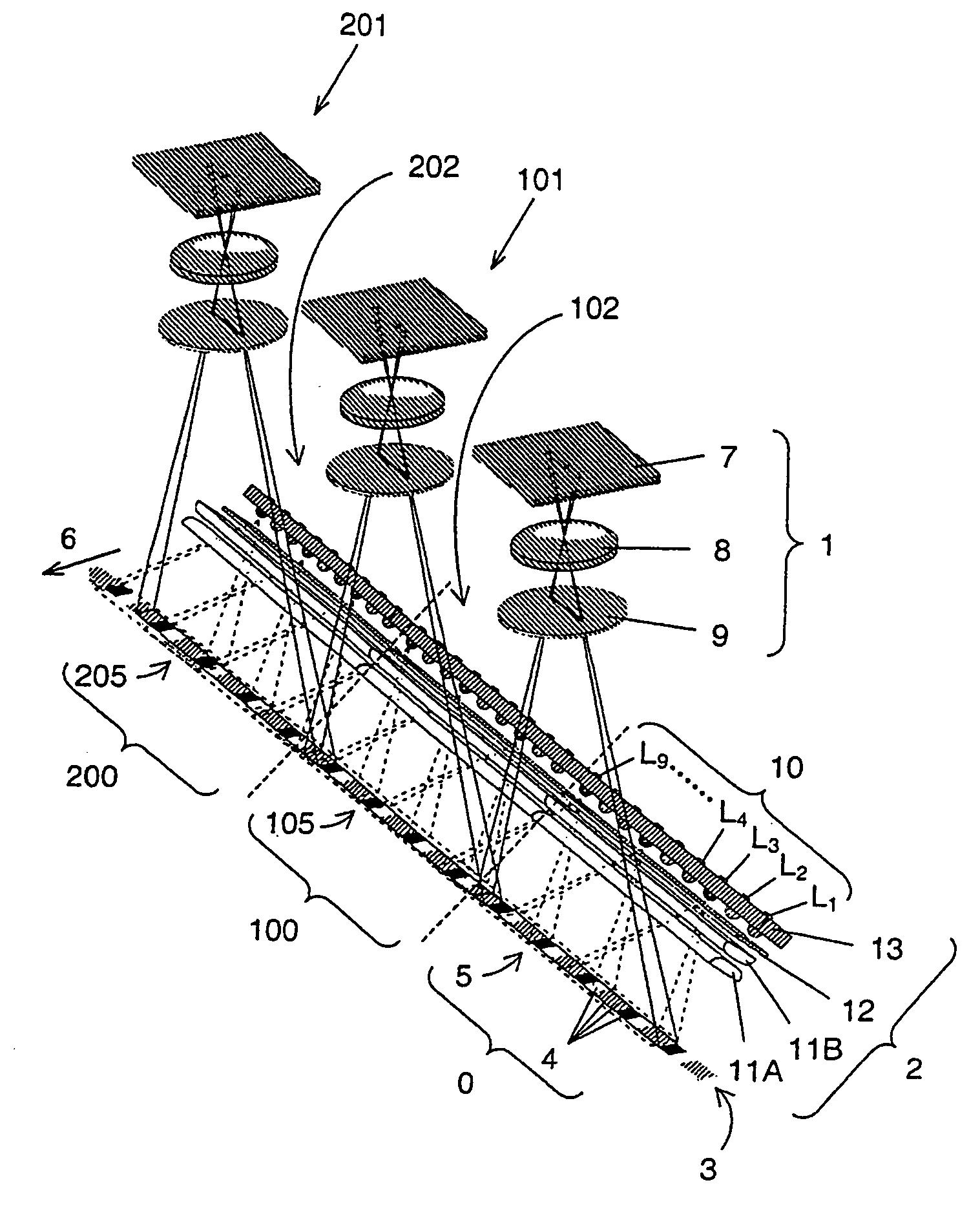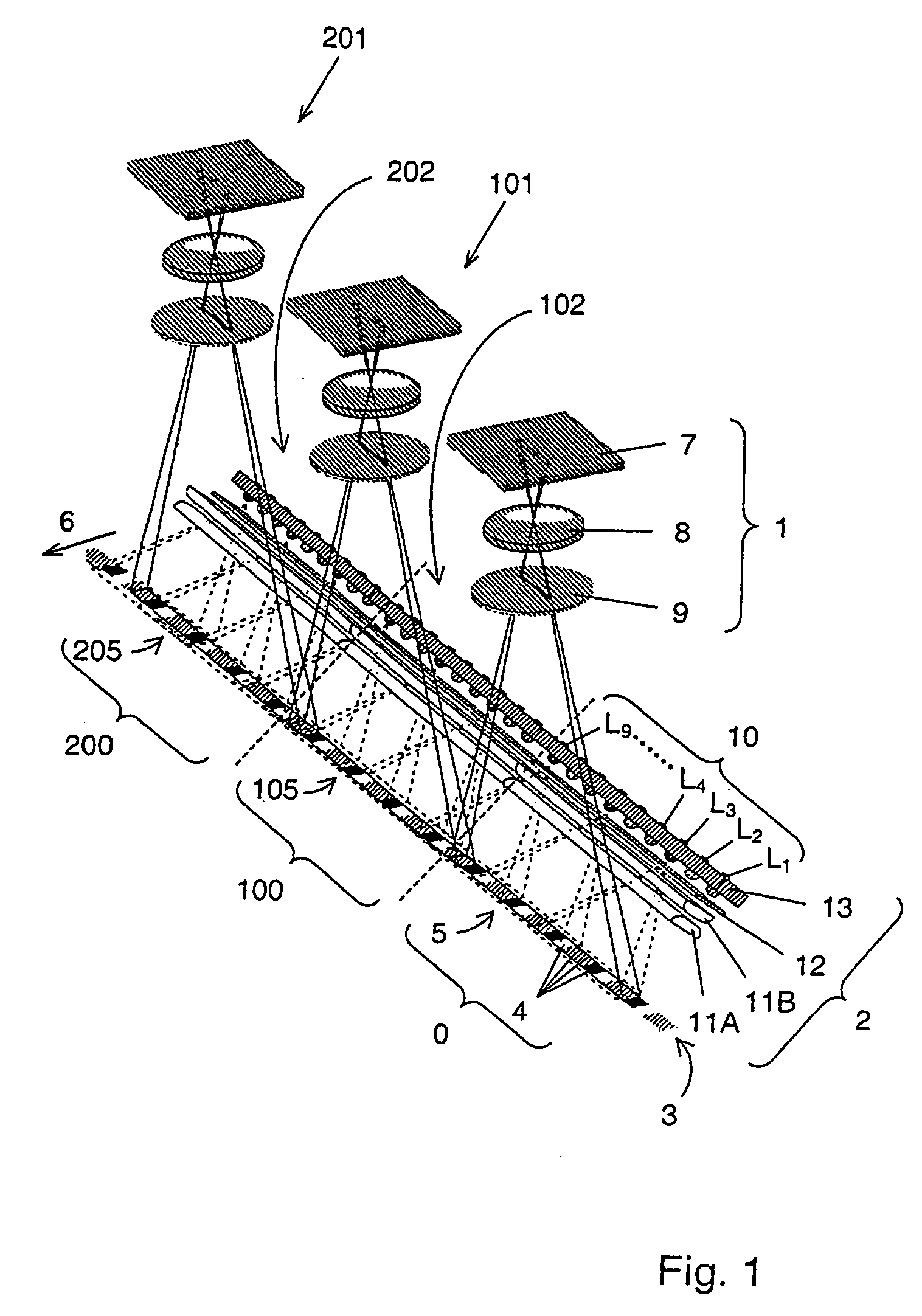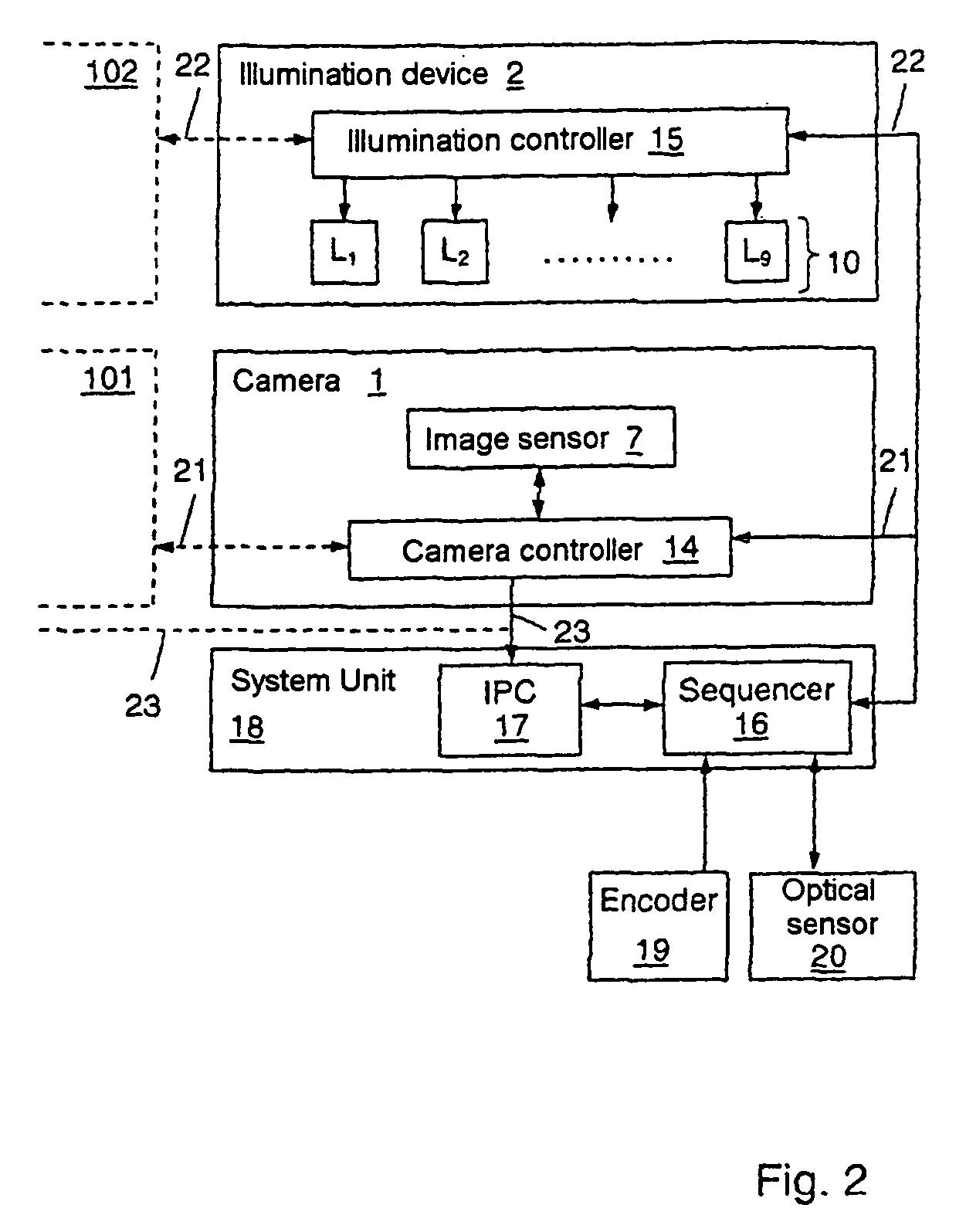Apparatus for acquiring an image of a predetermined extract of a moving printed product
a technology of printed products and extracts, applied in the field of apparatus for acquiring images of predetermined extracts of moving printed products, can solve the problems of high cost, inability to meet the needs of users, and inability to achieve the effects of reducing the number of images, high packing density, and high degree of redundancy
- Summary
- Abstract
- Description
- Claims
- Application Information
AI Technical Summary
Benefits of technology
Problems solved by technology
Method used
Image
Examples
Embodiment Construction
[0027]FIG. 1 shows in a simplified form the optical components of a preferred embodiment of the apparatus according to the invention, namely an electronic camera 1 and an associated illumination device 2. In this case, a plurality of identical cameras 1, 101 and 201 and a plurality of illumination devices 2, 102 and 202, respectively, assigned thereto are lined up modularly in a row. This possibility of combining a plurality of modules 0, 100 and 200, each comprising a camera and an illumination device, to form a larger unit is a particularly advantageous property of the invention. Initially, however, the construction of a single module and its functioning will be explained by using the module 0, which comprises the camera 1 and the illumination device 2.
[0028] The camera 1 is intended to record an image from a predetermined extract of a printed product, for example from a control strip 3 having a large number of periodically repeating measurement areas 4, while the control strip 3...
PUM
 Login to View More
Login to View More Abstract
Description
Claims
Application Information
 Login to View More
Login to View More - R&D
- Intellectual Property
- Life Sciences
- Materials
- Tech Scout
- Unparalleled Data Quality
- Higher Quality Content
- 60% Fewer Hallucinations
Browse by: Latest US Patents, China's latest patents, Technical Efficacy Thesaurus, Application Domain, Technology Topic, Popular Technical Reports.
© 2025 PatSnap. All rights reserved.Legal|Privacy policy|Modern Slavery Act Transparency Statement|Sitemap|About US| Contact US: help@patsnap.com



